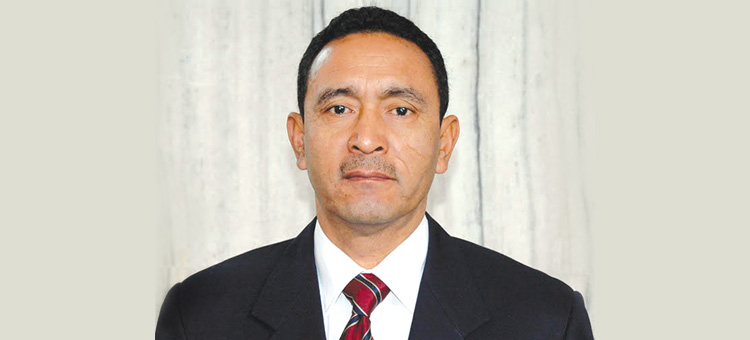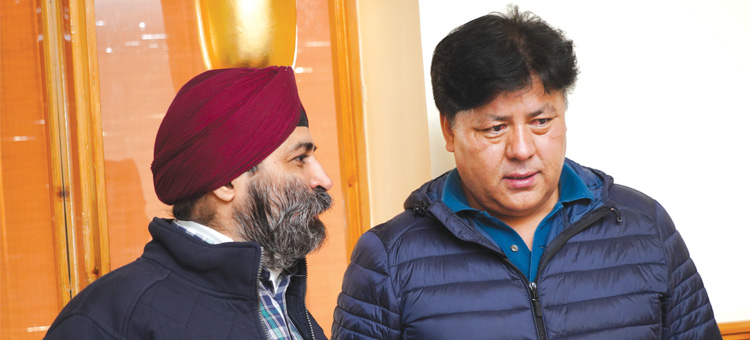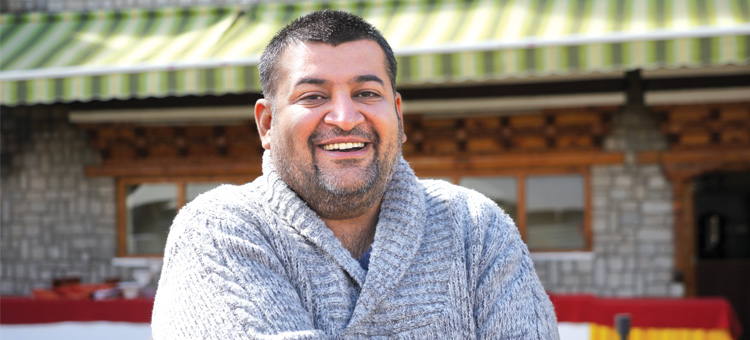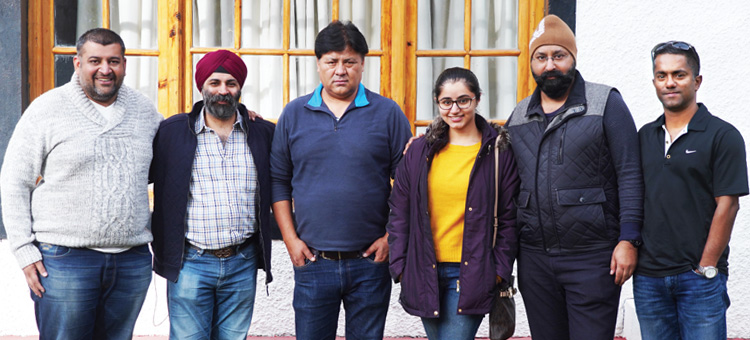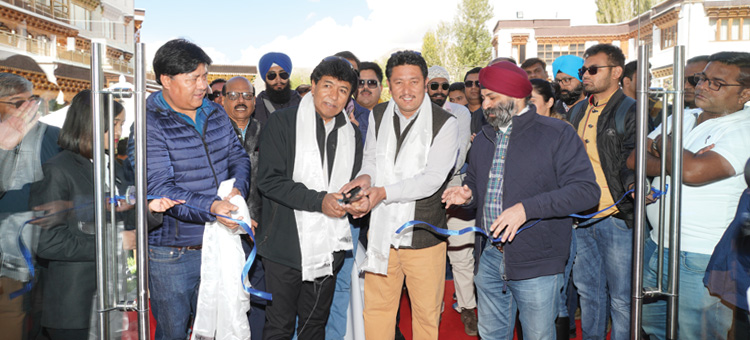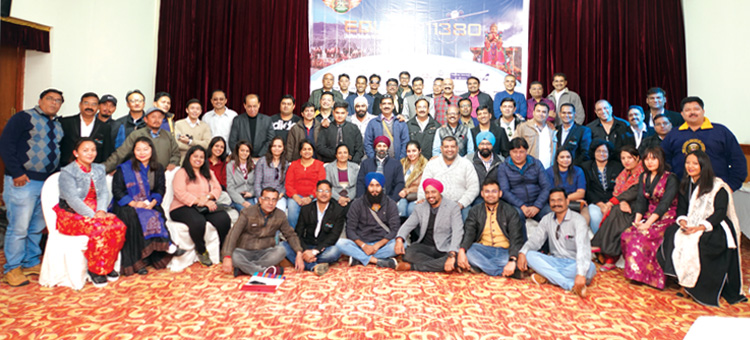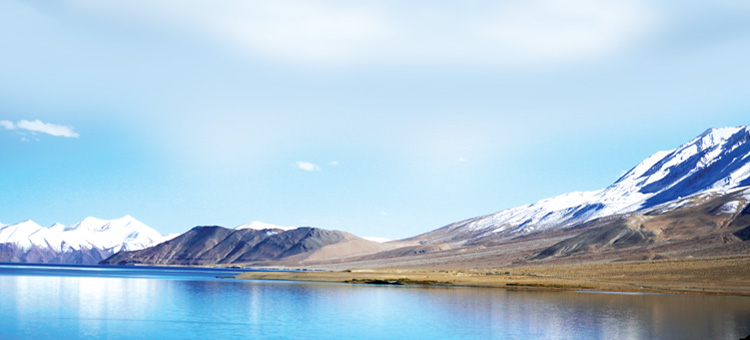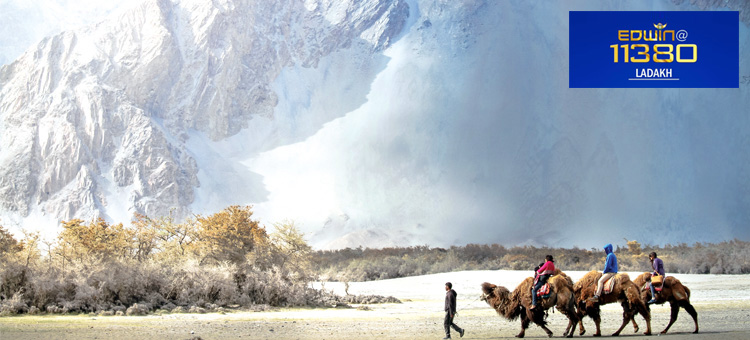I had heard so much about Ladakh. Many friends have travelled there and posted mesmerising pictures of the landscape in all its splendour. Not many places on Earth can offer such diversity in topography – snow clad mountains, rocky terrain, desert, plateaux, grasslands, lowlands, rivers and lakes.
It has been on my bucket list for a very long time and so when the opportunity presented itself, courtesy EDWIN@11380, I was more than ready to pack my bags.
Ladakh is one of the most inhospitable tourist destinations in the world. At an altitude of 11,380 ft. above mean sea level, travellers need to take a host of precautions to enjoy their visit to this place. There are many daily flights from Delhi to Leh’s Kushok Bakula Rimpochee Airport. Road routes from Manali and Srinagar are also popular.
Holidays in Ladakh come with its own set of unpredictability. The weather can play spoilsport any time. A traveller’s health can give in too without notice. So it is best to book though a travel agent/tour operator in Ladakh. The local travel trade community, down to the cabbie and tour guide, works in perfect unity and offers standard rates. There is no undercutting, so do not waste time negotiating. The rates, considering the destination and the unique circumstances under which tourism is carried out, are very reasonable. When plans go awry, only local travel trade can ensure rescheduling without a cancellation fee.
Ladakh has about 300 hotel rooms in Leh and another 300 are being added in 2019. Occupancy during season is 80-90 per cent. Nubra Valley and Pangong Lake, two very popular sites which tourists to Ladakh visit have a small inventory of rooms, mostly camps. Ladakh is 100 per cent safe even for women travellers.
“We want quality tourism,” says Tsetan Angchuk, President, All Ladakh Tour Operator Association (ALTOA). “Visitors to Ladakh have to promote sustainability and enjoy this destination by taking travel precautions and respecting local sensibilities. Our carrying capacity is low and ecosystem fragile, so we cannot engage in mass tourism. Every travel agent selling Ladakh has to keep these in mind.”
Tourism started in the region in 1975 when there were no hotels; only homestays. Last year, about 2,80,000 tourists visited Ladakh of which about 50,000 were foreign nationals. Most of them travel in May-June when the temperature is not extreme. Adventure tourists plan during the winter when activities like glacier walks are possible. Most of the hotels in Ladakh operate only from May to October and are closed for the remaining six months. Imagine, during winter, a hotel will have to deliver hot water individually to room guests as the water in the pipes freeze!
The camps in Nubra and Pangong do not have central heating. While camps in Nubra have room heaters, the ones in Pangong do not have it. Guests in Pangong rely on hot water bags and extra blankets to beat the cold at night! Electricity is shut down during the night in Nubra, Pangong and many other places as most hotels rely on solar energy. This is tourism and hospitality minus the frills of a ‘5-star’ but trust me, it’s totally worth it.
Making Ladakh a year round destination requires a lot more planning, investment and infrastructure. “Most domestic tourists come in May-June for jeep safari and culture tours,” says Tundup Dorje, owner of Overland Escape, the biggest DMC in the region. “Now we are looking at how to extend domestic season till September-October, so overcrowding can be avoided. We are trying to promote Ladakh in key markets for winter trekking, biking, rafting, mountaineering and other adventure activities among young tourists especially millennials.”
GPS’ EDWIN is a unique learning initiative to build destination awareness among travel trade, helping them sell better and ensure worthwhile experiences for their guests. Says Harmandeep Singh Anand, MD, GPS, “EDWIN helps travel agents and tour operators become destination specialists who value sustainable and responsible tourism, and hold themselves accountable for an exceptional guest experience.”
The Leh airport where we landed around noon when the mercury was at 13 degrees Celsius is operated by Ministry of Defence and so photography is strictly prohibited. Ladakh is one of the most militarised areas in India owing to close proximity with hostile neighbours. Yet the biggest pillar of strength for the tourism industry and economy in general in Ladakh is the Indian Army. The best wayside amenities in Ladakh while travelling by road to Nubra and Pangong are built and managed by the defence forces. I was shocked to see open pit toilets elsewhere after paying Rs. 10. I wonder how women and children would manage. The 90 million toilets built by our Prime Minister do not seem to have made their way to Ladakh! “Sustainability is the focus and main conversation now,” assures Dorje. “The travel trade has tied up with NGOs and in the next two years you will see excellent wayside amenities.”
We stayed at Indus Valley, the newest boutique hotel in Leh with central heating, exceptionally well-appointed rooms, and just a short walk away from the main market. After lunch and sufficient rest which is very important especially on day 1, we visited Shanti Stupa, one of the most popular tourist sites, facing the Ladakh Palace and offering panoramic views of the surrounding landscape. The Shanti Stupa holds the relics of the Buddha at its base, enshrined by the 14th Dalai Lama. We watched the sunset from here and it offers ample scope for selfies. Dinner was finished early at Grand Himalaya, a museum hotel with lots of trinkets on display.
Former J&K tourism minister and sitting MLA of Ladakh, Nawang Rigzin Jora has been a great supporter of tourism to Ladakh. Aamir Khan-starrer 3 Idiots was shot in his constituency when he was presiding over tourism. “It was my good fortune,” says Jora. During his time as minister he secured funding from Government of India for many projects in Leh with impact on tourism. He also revised the list of areas which are eligible for subsidy. “Now in the entire district, whoever wants to start a guest house or hotel gets the subsidy of Rs. 30 lakhs,” says the current MLA. “Tourism is the main pillar of Ladakh’s economy offering a means of livelihood for our people. Travel agents and tour operators promoting Ladakh and initiatives like GPS-EDWIN are delivering a national duty. You are providing our people bread and butter.”
The recent J&K focus of Union Ministry of Tourism (MoT) has not resulted in any gains for Ladakh. “No traveller has come to Ladakh because of anything J&K Tourism or MoT did,” says Kamlesh Lalan of Ravine Trek, a Mumbai-based firm specialising in tours to the region. “Ladakh has grown due to word of mouth. J&K Tourism has only been interested in promoting Kashmir. Unlike Kashmir, Ladakh has been peaceful so tourism grew organically.”
This junket was with over 100 travel trade partners from around India (57 cities and 16 states, to be precise) and the B2B session arranged on day 2 at Grand Dragon Hotel in Leh allowed them to meet and discuss business with 30 local suppliers operating across the region – hoteliers, tour operators, DMCs, cab operators and adventure tourism specialists. The ball room where the B2B session was held is the only meeting space of its size and the biggest in Leh. “Ladakh can only take small MICE events but the backdrop and experience it can offer are unmatched,” affirms Harmandeep of GPS.
During the second half, the group visited Sangam, located on National Highway 1 to Srinagar. Watching the confluence of the muddy Zanskar waters with the bluish-green Indus is so breathtaking. Sangam is also the world’s highest rafting point. Again, we were here as the sun was going down and the setting turned surreal. On our return from Sangam, we visited Magnetic Hill, Gurudwara Sri Pathar Sahib and the Indian Army’s Hall of Fame Museum.
The Magnetic Hill on the Leh-Kargil-Baltic National Highway teases you with its gravity-defying phenomenon. Park within the area marked in yellow on the road and witness the vehicle being pulled by an invisible force!
Gurudwara Sri Pathar Sahib was our next stop. Everyone, especially tourists on bikes, pay a visit to the Gurudwara built, maintained and managed by the Indian Army. The walls are adorned with thanksgiving messages cast in stone after successful operations by the various units of the armed forces and police. The tea and snacks offered complimentarily after the visit is simply yummy. There is decent toilet facility too.
The Hall of Fame is a must-visit for every tourist to Ladakh and my favourite discovery on this trip. They maintain the ‘Amar Jyothi’ and perform ‘Beating the Retreat’ every day. The museum has a lot of interesting information on military award winners from the region, successful operations, a souvenir shop (selling dry fruits, fridge magnets and shawls) and the Aroma Café. The Light and Sound Show held daily to packed audiences will make any Indian proud. The ‘Scroll of Fame’ is an adjoining area where the names of hundreds of soldiers who have fought in the region and lost their lives in service of our nation are cast in stone as an everlasting tribute. Open from 9 am to 6 pm, there is a nominal entry fee and photography/videography is allowed.
On day 3, our final destination was Nubra. Two hours from Leh is Kardungla Pass, the highest motorable road in the world and another two hours from there is Nubra. The two options available on hire for road travel are the Toyota Innova and the 15-seater Tempo Traveller. The roads are winding and treacherous, and there are no safety railings along the way so I would insist self-driving only for those who are really good at the wheel. Having driven comfortably to any hill station in India is no befitting experience certificate to drive in Ladakh. Calling Ladakh a hill station is an insult. It’s like calling McLaren a car!
A proper road to Kardungla is under construction by the Indian Army. What we travelled on is a mud road scooped out of ice! The landscape is awe-inspiring and majestic. Mobile phone memory is simply insufficient to capture it all. Co-travellers who have visited the Canadian Rockies, Switzerland and the Scandinavian mountains told me in no uncertain terms that Ladakh is even more beautiful and pristine.
We checked in to Nubra Organic Retreat, a quaint property comprising 20 Swiss deluxe tents with attached bathroom, each offering a grand view of the snow clad Himalayan peaks. Add to that an organic vegetable garden and fruit orchard for bringing excellent fare on to the dining table.
Just 10 minutes away is Sandunes, a sought-after tourist spot where one can ride the Bactrian camel. It is a highly endangered sub-species and known by the double hump on its back. This was one of the most crowded sites on our entire journey. Camel safaris can be undertaken for 15, 30 and 60 minutes and costs Rs. 600 for an hour.
Back at the retreat, we had a quiet campfire to beat the cold before we finished an early dinner and retired to our tents.
While basic medical facilities are available across Ladakh, medical evacuation (air lifting) is only possible from Leh. If you drink like a fish and / or smoke like a chimney, Ladakh most likely will make you pay for your bad behaviour. You can experience and enjoy Ladakh whether you have diabetes, asthma, a heart ailment or high BP as long as you take the necessary precautions (see box on travel tips) and respect your body. Ladakh is a prayer. Don’t make it a penance. Many people think it’s not easy with kids but little ones generally have better tolerance for high altitude.
Three of my co-travellers had to return from Nubra and miss Pangong, because of poor health and you know why.
On World Tourism Day (day 4) we checked out from Nubra Organic Retreat to travel to Pangong, the place made famous by 3 Idiots. Before leaving, we plucked a lot of apples from the organic orchard at our resort and believe me apples haven’t tasted so good. They are smaller than what we see in our supermarkets, but taste like heaven.
Mobile telephony and mobile internet connections are pathetic all over Ladakh. Only BSNL and Airtel post-paid connections work but the call reception is patchy in Leh. It is very normal for hotels in Leh to inform you that hotel Wi-Fi is not working. While travelling on the road to Nubra or Pangong, mobile connectivity is intermittent. At Nubra hotel, Wi-Fi is available only at the front desk and in all probability may not always work. In Pangong, there is no hotel Wi-Fi or mobile connectivity. On the lake, there are two Fixed Wireless Phone (FWP) connections at the shacks, and one can make an STD call for Rs. 5 per minute. But the FWP set has to be carried to a particular spot on the lake side where the calls go through! It is both a blessing and a pain depending on how well you had prepared for this trip. I had not and faced a tough time delivering work assignments.
Enroute to Pangong we stopped by the 32 m statue of Maitreya Buddha (Future Buddha) facing down the Shyok River towards Pakistan. There is a small prayer room on the first floor, inaugurated by the 14th Dalai Lama. The oldest and biggest Buddhist monastery in Nubra Valley, the Diskit Monastery can be seen from here.
The Nubra river keeps us company, flowing peacefully, showing off its turquoise blue waters till the Maitreya Buddha temple. The Shyok river takes over after some time. We stop at Durbuk check post to show our permit to enter Pangong. From here it is a one-hour journey; it is sunny but the breeze is cold. The roads are decent and one has to commend the incredible work done by the Border Roads Organization.
We checked into Pangong Resort & Camp around lunch time. This is a luxury property located right on the bank of the lake. One of the most serene and picturesque waterbeds in the world, Pangong Tso as the Ladakhis call it, is located at 14,270 ft. above sea level. The dwelling units are semi-permanent structures with canvas roofing which make them look like tents. There is hot water and power supply for a limited time. We had been advised not to take bath and only freshen up. “If you can survive the night in Pangong then you are born tough,” says Lalan of Ravine Trek.
Post lunch and some rest, we went down to the lake. Props from the iconic film set have been recreated for photo opportunities and most tourists indulge in them. It is quite windy and how long one can stay by the lake depends on how windy it is on a particular day. Pangong is a salt water lake – 75 per cent in China; 25 per cent in India. During winter when the mercury drops to -40 degree Celsius, ice skating and camping are possible on the lake.
Sunrise at Pangong Lake is to die for. There is nothing more beautiful than this anywhere in India, and maybe hardly anywhere else in the world. At 5:30 am, we walked down to the lake, yes, it will be very cold and windy, and watched the first rays of the sun illuminate the rugged mountain ranges. It is totally worth it. You can also witness this from your sit out at the tent if you do not wish to brave the sub-zero temperature.
After breakfast we commenced our return journey to Leh. On the way we stopped by to say hi to the Himalayan Marmot which comes out during summer and hibernates in winter. We passed through Tsoltak where there are avalanche alert boards and the roads become difficult.
We touched Changla Pass, the second highest motorable road in the world, then Karu village where I bought a Kit Kat on MRP (Ladakhis are so righteous; even if they can sell for a premium, they will not) and arrived at the Thiksey Monastery. The monastery is located in the Indus Valley. It is a twelve-story complex and houses many items of Buddhist art such as stupas, statues, thangkas, wall paintings and swords. One of the main points of interest is the Maitreya Temple installed to commemorate the visit of the 14th Dalai Lama to this monastery in 1970; it contains a 15 m high statue of Maitreya, the largest such statue in Ladakh, covering two stories of the building.
We also visited Rancho’s Druk White Lotus School, Shay, Ladakh. This school became famous after the film. On arrival here you will be taken inside the campus for a guided tour. The school was damaged by floods in 2010. The 3 Idiots wall is the most popular spot for selfies. There is a café and souvenir shop too.
The last activity on our itinerary was shopping in Leh main market which we did after we checked back in to Indus Valley hotel for the night before our flight back to Delhi next day morning. Since there is no parking in the market area, we got dropped off. With many lanes and by-lanes, all of which have small shops selling a variety of products, one can find everything like dry fruits, woollen wear, handicrafts, jewellery, carpets, shawls and souvenirs. The Tibetan Refugee Market set up here sells locks with unique carvings and artefacts. While prices are negotiable, not many places accept credit cards.
As the aeroplane started gaining altitude, I thought about the last five days. You leave behind a part of you so you can come back to Ladakh to reclaim it. Ladakh awaits you – now and then. A destination that can make you a romantic and you cannot blame it. Contemplative. Proud. Creative. Humble. Lazy. Grateful. Rejuvenated. Not many places on Earth can offer so much. You succumb to its charm. Willingly. A land truly like no other.
Inner Line Permit
Inner Line Permit is required in Leh-Ladakh to visit restricted areas like Pangong, Nubra and a few others. The permit per se is free but every visitor has to pay Environment Fee Rs. 400; Wildlife Fee Rs. 20 per person per day; Rs. 100 for Red Cross Society and nominal service charge for the travel agent managing the paper work. So approx. Rs. 700 per person.
Other short trips from Leh
- Kargil (Drass Village is the second coldest in the world): 182 km
- MoonLand, Lamayuru: 118 km
- Tso Moriri Lake: 125 km
- Changtang Wildlife Sanctuary: 76 km
- Zanskar Valley: 119 km
Recommended Travel Tips
Best Period to visit
Ladakh: April – October
- Via Srinagar Route: May – November
- Via Manali Route: June – September
- Via Zangskar Route: June – December
- Opening/Operating of above routes depend on weather condition of high pass
- There is no off season
Conduct, Attire and Grooming
- Avoid revealing attire and be modest in dressing; do not expose body to cold climate
- Female traveller: No open hair, short skirts or revealing dresses allowed at gompa or any religious places
- Male travellers: No short pants or sleeveless shirts allowed at gompa or any religious places
- Avoid public smoking
- Ladakh is litter-free. Do not throw garbage or any kind of dirt on the road or at passes
- Avoid loud talk during visit to religious places, local homes or in public places
- Please do not address any locals as Pakistani, Chinese, Chinki, Bihari or Nepali, as this will hurt their sentiments
Do’s and Don’ts
- On landing in Leh, relax for first 24 hours. Do not rush into physical activities or stay awake
- Do not take bath on day of arrival
- Avoid smoking and consuming alcohol
- Drink water throughout the day to remain hydrated
- Do not hold urine; stop by at a wayside amenity centre
- Do not suffocate yourself at night by wearing multiple layers of clothing, during time of sleep
- Ensure your feet are always covered
- While returning from Leh, usual cabin baggage of 7 kg is not permitted due to J&K security protocol. However, you can check in extra 7 kg along with the usual 15 kg allowed
Things to Carry
- Woollen clothing (Gloves, Cap, Socks, Sweater) / Muffler / Shawl / Scarf
- Inner clothing (Thermal wear recommended) / Sun Hat or Cap
- Light weight wind stopper jacket & base (Recommended)
- Sun Glasses with UV Protection (Highly recommended)
- Sun Screen Lotion with min SPF 40/50 & Cold Cream (Highly recommended)
- Sandals / Slippers and Proper Shoes (Avoid leather shoes)
- Hand Towels / Dry Fit Towels (Recommended)
- Cotton / Cargo Clothing for day journey
- Backpack for day journey
- Dry Fruits / Energy Bars
- Personal toiletries
- For senior citizens – adult diapers
- For female travellers – sanitary napkins
Recommended Medicines: Please consult a physician
- Avomine – Vomiting
- D’Cold – Common Cold
- Combiflam – Body Pain
- Vicks Vaporub or Inhaler – Nose Block / Cold
- Iodex Pan Relief Balm / Volini Spray – Sprain
- Diamox – High Altitude Sickness
- Saridon – Headache
- Glucon D / Electral Powder & Camphor
Identity Proof
- Indian national: Always carry a photo identity card with address proof along with you for security purpose (Passport / Aadhaar Card / Election Card)
- Foreign national: Please carry your passport along with valid visa, and few photocopies of passport and visa
Heating
- Only few hotels in Leh have central heating facility
- No heater will be provided at Pangong camps and many other places except Leh (In select Leh hotels, heating facility is available from October till end of April or mid of May) depending on temperature
Mobile
- For tourists from outside the State, only post paid connections of BSNL and Airtel work
- Routes of Zangskar, Kargil, Sham Valley, Nubra, Tso Moriri and Pangong have only BSNL network
The author was hosted by Global Panorama Showcase (GPS)

